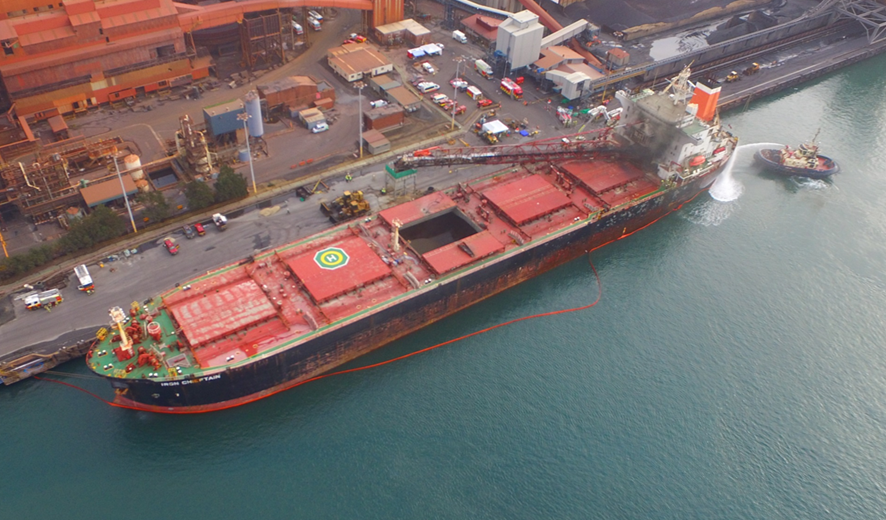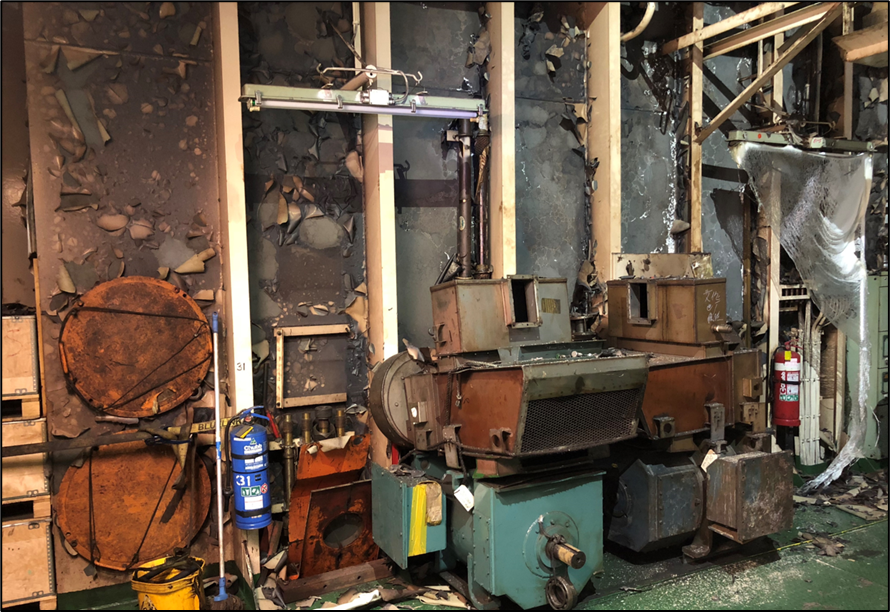
During cargo discharge operations while alongside, a fire broke out in the internal cargo handling spaces of the self-unloading (SUL) bulk carrier3. The ship sustained substantial structural damage and was declared a total loss.
The investigation identified that the fire was likely the result of a failed bearing in the ship’s conveyor system, which created the heat necessary to ignite the rubber conveyor belt. Five years before the fire, the operators identified the fire risk in the ship’s cargo SUL system spaces, particularly the C-Loop, as being unacceptably high due to the absence of fire detection or fixed fire extinguishing system. However, at the time of the fire, the prevention and mitigation measures had not reduced the risk to an acceptable level.

The ship did not have an emergency contingency plan for responding to fire in the ship’s SUL spaces and there were technical failures of the ship’s alarm systems during the emergency response to the fire.
At the time of the fire, 14 of the ship’s crew of 20 had not participated in a fire drill on board in the previous month as per SOLAS regulations.
In response to the incident, the operator initiated a fire risk mitigation project with the aim of:
- improving fire detection and suppression technology
- reviewing and improving their firefighting policy
- setting minimum fire safety standards for early fire detection and suppression at the ship design and build stage.
3 ATSB (2021). Fire on board Iron Chieftain. Marine Occurrence Investigation MO-2018-011